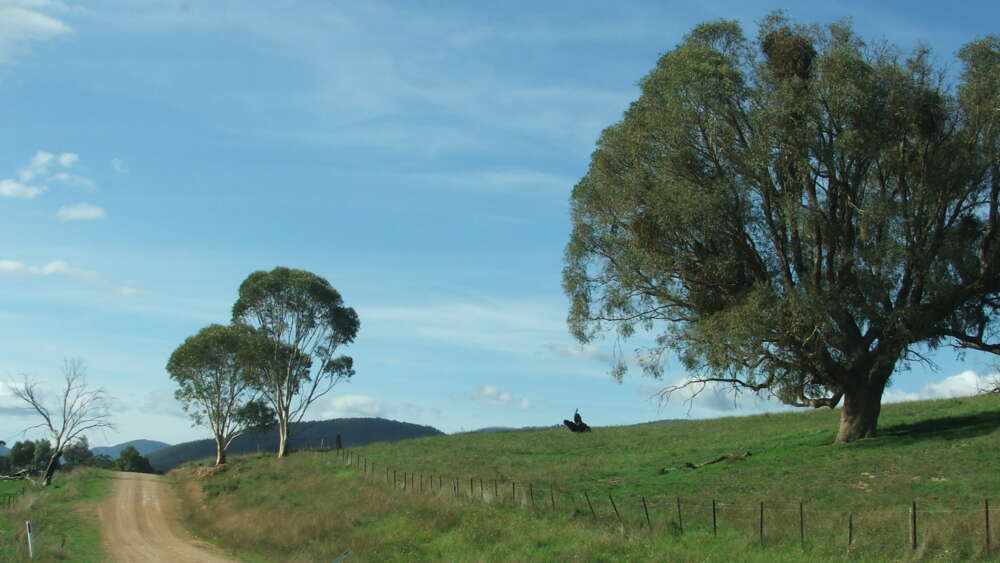Last month, my wife and I left home for a three-night holiday for the first time since 2019. We drove to Coonawarra, just over the South Australian border, where our youngest son and his partner are working with separate wineries producing the 2022 vintage.
We had a magnificent, blessed time (thank you for asking) until the journey home to Melbourne. As we came into Ballarat from Hamilton, there were massive roadworks blocking the road and no signs or detours posted. I was quickly lost.
Google Maps directions lead up the garden path
At this point I did what I understand most Australians would do: I asked Google Maps. The voice from the phone was perfectly confident – but utterly incompetent. Instead of leading us to the highway to Melbourne, in no time we were driving on gravel roads through forest, then along tiny open roads, then along a back route with about a metre of ancient asphalt in the middle and narrow gravel sides. After at least 70 kilometres and probably an hour and a half we discerned it was leading us to Werribee, a mere 65 kilometres across the city from where we live. I switched to Apple Maps, and finally got on to the Western Highway at Melton.
I’ve got a few words – no, paragraphs – I’d like to say to the Ballarat council. Why are there no signs pointing to Melbourne? Why do they make it so difficult? Perhaps they simply don’t like Melburnians and enjoy obstructing us. But, if that’s the case, they’d get the unwelcome visitors out of town much faster with some accurate instructions.
There may be other possible explanations, but I can’t think of any.
I’m reminded of Samuel Johnson’s reply to an interlocutor who rebuked him for his scathing attitude to Scotland. Dr Johnson stated, “Sir, it is a very vile country.” His companion replied, “Well sir, God made it.” Dr Johnson: “Certainly he did, but we must remember that He made it for Scotchmen.”
What I’d like to say to Google Maps would blister their ears, but I’ll leave that to the imagination of the gentle readers of this temperate journal.
Biblical lessons in Google Maps
Why am I telling you this? First, because a problem shared is a problem two people have got. And second, and more importantly, as we drove along these ragged country roads I had time to reflect on Jesus’ instruction in Matthew 7:13 and 14: “Enter through the narrow gate. For wide is the gate and broad is the road that leads to destruction, and many enter through it. But small is the gate and narrow the road that leads to life, and only a few find it.”
Well, the Western Highway, with its bumper-to-bumper holiday traffic, and the backroads with scarcely a soul upon them were a dramatic illustration of Jesus’ metaphor.
John Bunyan, the 17th-century Puritan preacher and author of The Pilgrim’s Progress, was a man who knew much about the narrow path. He spent years in jail for refusing to conform to the Anglican Church, even though – as a biographer quotes him – “O I saw in this condition I was a man who was pulling down his house upon the head of his Wife and Children; yet thought I, ‘I must do it, I must do it’.” And, sure enough, his family did suffer for his purity of purpose.
One of the powerful allegories in Pilgrim’s Progress is the wicket gate – small and hard to find, yet through which all pilgrims must enter the narrow king’s highway in search of Mt Zion and salvation.
Taking that first step
That the gate is so small and difficult to pass through highlights how difficult the first step is in seeking faith, for it involves repudiating our natural desires and inclinations and stepping into something new and unknown. Furthermore, the great 19th-century scholars Jamieson, Fausset and Brown, whose commentary dates from 1871, note that the whole journey is as difficult as that first step, which is why only a few will find it. “Its very first step involves a revolution in all our purposes and plans for life, and a surrender of all that is dear to natural inclination, while all that follows is but a repetition of the first great act of self-sacrifice,” the commentary says. Yet the narrow road has one outstanding advantage: it leads to life, whereas the broad road leads to destruction.
Another great 19th-century expositor, Bishop J. C. Ryle, wrote in 1879 that Christians should not be discouraged if the religion they profess is unpopular. “Repentance and faith in Christ and holiness of life have never been fashionable … It must not move us to find that we are reckoned singular and peculiar and bigoted and narrow-minded. This is ‘the narrow way’.” That’s a message no less relevant or necessary today – though we can legitimately seek to discover what the narrow way entails.
Two sides to every story and more spiritual lessons
As for me, I got home unscathed, to the loudly professed delight of the dog. My wife really enjoyed the backroads, the lack of traffic and the scenery and was quite unperturbed, whereas I was eager to get back on the broad path. Neither of us had the slightest trust in Google Maps, but her faith in providence was superior. Obviously there are spiritual lessons there for me.
Barney Zwartz is a Senior Fellow of the Centre for Public Christianity and was religion editor for The Age from 2002 to 2013.
Email This Story
Why not send this to a friend?


